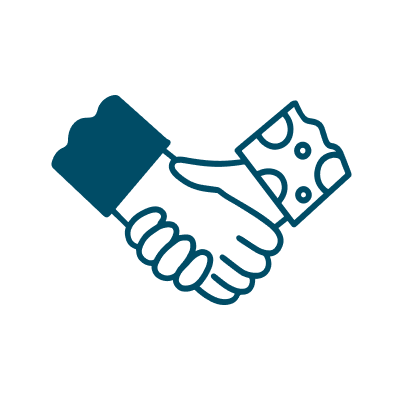This can be an effective and important component of any programme to reduce the negative impacts of our invisible prejudices
Unconscious bias can have a detrimental effect on your colleagues, your prospects and your organisation.
These unseen forces play a major role in the decisions we make every day, limiting our potential and reducing opportunities for people who look, sound or think differently. And that can be a problem.
It’s a big enough problem that venture capitalists in the US have ploughed $50 million into start-ups aimed at reducing unconscious bias.
This is in addition to the billions being spent on programmes to raise awareness and practical actions to counteract bias.
- Quantifying the cost of unconscious bias
- Interrupting unconscious bias: a blueprint
- Is unconscious bias impossible to eradicate?
- From knowledge to implementation
- Unconscious bias is everywhere: your programme should be too
- Reducing unconscious bias with learning and development
- Becoming fair, inclusive and transparent (FIT)
- Reducing unconscious bias in recruitment
- What’s next for unconscious bias?
- Unconscious bias training
Quantifying the cost of unconscious bias

Addressing unconscious bias is important for organisations that want to embed and embrace diversity (and the benefits it brings). But it’s much more than that - the costs of failing to address unconscious bias can include disengaged employees, workforce turnover and a weakened employer brand
Talent Innovation conducted a survey into the experiences of people who are negatively affected by unconscious bias.
Their findings are stark:
- 33% of people who perceive bias regularly feel alienated at work (compared to just 8% for people who don’t experience bias)
- 31% of people who perceive bias plan to leave their employer (compared to just 10% for people who don’t experience bias)
- 34% of people who experience bias have withheld ideas or solutions in the past 6 months (compared to just 13% of people who don’t experience bias)
The survey results demonstrate that unconscious bias can cost your company in cash, brand equity, innovation, and growth.
Dealing with unconscious bias is too costly an issue to be left to a single training programme.
“Unfairness costs US employers $64 billion on an annual basis.” – Corporate Leavers Survey (2007)
Interrupting unconscious bias: a blueprint
Has your organisation delivered unconscious bias training? You may have found – just like Google, Facebook and Yahoo – that unconscious bias training is a worthwhile investment. But it’s not enough: a one-off training programme is unlikely to be sufficient to change behaviours.
Why? Because unconscious bias is the name given to a host of thought processes that are, unsurprisingly, unconscious. These biases influence decisions that we often don’t realise we are making. Our intrinsic biases direct us, subtly, to stay safe by making decisions that keep us close to familiar people, outcomes and experiences.
Is unconscious bias impossible to eradicate?

Has your organisation conquered unconscious bias? Of course, the answer is no. Can you ever really conquer a fundamental component of human consciousness? No. Not now. Not ever
Our unconscious biases keep us alive by helping us navigate a complex world – and make thousands of choices quickly each day. Unconscious bias can’t be eliminated. Nor would you want to, because we all rely on unconscious bias to get us through the day.
What you can do is raise awareness of unconscious bias, where it originates, how it is used, and you can remind your colleagues of the negative impact that unconscious bias can have on others and the organisation.
From knowledge to implementation
Unconscious bias eLearning training can be an effective and important component of any programme to reduce the negative impacts of our invisible prejudices. Before we can address the forces that impact our behaviours and decisions, we have to understand the concept and recognise that we all experience this phenomenon.
Training can help colleagues know when to watch for unconscious bias, which situations are most prone to these forces, and how to catch themselves before making an unfairly biased decision. Unconscious bias eLearning training gives your colleagues the knowledge they need to begin addressing this issue.
Unconscious bias is everywhere: your programme should be too
If unconscious bias training is your foundation, what should the building look like? Unconscious bias can’t be eliminated, but there are many approaches to raising awareness, catching bias in action, and counteracting the effects of these hidden forces.
The approaches that typically bear the most fruit fit into three categories:
- Learning and development
- Organisational design (becoming FIT)
- Recruitment
Let’s explore these facets in more detail.
Reducing unconscious bias with learning and development

With unconscious bias influencing every decision that anyone makes, it’s clear that raising awareness is no easy feat. To be effective, corporate learning programmes must go beyond teaching the concept; you must also bring the learning to life, regularly remind people of unconscious bias, and also build skills and competencies that support your diversity goals
Blended learning
Offering employees a range of learning experiences can be an effective way to develop skills and knowledge. Instead of simply offering a single learning format, such as eLearning, colleagues are given a blend of face-to-face training, supported by digital experiences.
As well as making learning more interesting and varied for learners, it is proven to be more effective as a teaching method.
“In studies contrasting blends of online and face-to-face instruction with conventional face-to-face classes, blended instruction has been more effective.” – US Department of Education
Blended learning also supports different learning styles. Colleagues who might struggle to absorb ideas purely in a classroom environment can augment their learning with resources in a range of digital formats, such as podcasts, videos or ebooks. Not only does this improve levels of understanding and information retention, but employees are less likely to feel stressed; if they struggle with one format, they can easily choose another way to learn.
Developing complementary skills
How many aspects of our life and work are influenced by unconscious bias? The truth is that we rely on our unconscious mind to make quick decisions every day.
Every action we take, from insignificant decisions like which shoe we put on first, to bigger decisions like what we eat for lunch, or who we consider for promotion, will be influenced by biases that we don’t even recognise.
Unconscious bias emerges in many of the tasks we perform at work, as well as the decisions we make. By helping colleagues develop other skills and strengths, organisations can raise awareness of the potential for these moments to be limited or influenced by unseen biases.
Communication skills
The way we communicate can unintentionally exclude – or favour – certain groups. Helping colleagues recognise the impact of their choices can reduce the actuality and perception of bias within your organisation. Examples of issues that reflect our unconscious biases:
- Sharing stereotypical or racist tropes or jokes
- Assuming that men are always leaders or in positions of authority (“Call the manager and ask if he is free next week”)
- Referring to obscure terms, memes or experiences that are likely to exclude some colleagues
Performance management
Anyone leading a team needs to understand how their decisions about performance management can detrimentally affect colleagues while giving others an advantage.
Performance reviews and processes should be consistent for all colleagues in every department, regardless of who is conducting the review. For this to happen, the performance review process should be clearly defined so that:
- Every colleague is judged on the appropriate criteria
- Personality is separated from performance
- Colleagues are judged on the specifics of their performance
- Evidence is required to support ratings – this demonstrates why the outcomes relate to any assessment of performance
- Avoid subjective comments, such as judging a colleague on their ‘culture fit’ or ‘commitment’
“A recent study of performance evaluations in tech found that 66% of women’s performance reviews contained negative personality criticism (“You come off as abrasive”) whereas only 1% of men’s reviews did.” – Bias Interrupters
Decision making
Reflecting on how we make decisions – and why – is an important part of addressing and arresting our unconscious bias. Our Unconscious Bias eLearning course covers decision-making in domains such as recruitment, people development, marketing and leadership.
Coaching and mentoring
The forces of unconscious bias are so pervasive that our colleagues may benefit from support to help them overcome their own biases, and also deal with their experiences of suffering negatively from prejudice.
Mentoring
Mentoring can help newer team members or even more established colleagues to access internal and external connections, build relevant knowledge and provide confidence in their abilities – which will also support their career progression. This assistance can be particularly beneficial for colleagues from backgrounds that are less well represented in more senior roles.
Mentoring can encourage a more diverse set of candidates to recognise that leadership roles are open to them, which in turn can lead to a greater mix of ideas, inspiration and perspectives in your senior positions.
Care must be taken to ensure that any mentorship scheme does not itself fall victim to the forces of bias – something that can easily happen.
Consider how mentees are assigned to mentors and the process that these relationships follow. How can every mentor/mentee relationship be equitable?
Coaching
Would some of your colleagues benefit from focused coaching sessions? Connecting colleagues through coaching relationships isn’t just an effective way to share knowledge and skills, it also helps build connections between people across departments, teams and backgrounds.
The provision of coaching must be managed carefully so that all colleagues have an equal opportunity to get targeted support to deal with particular issues. Coaches should be supported to recognise the role that unconscious bias can play in how they respond to colleagues – and the level of support they offer.
Becoming fair, inclusive and transparent (FIT)
Training and development programmes are an essential tactic to improve diversity and interrupt unconscious bias. But these initiatives will never succeed if the underlying organisation is not FIT:
- Fair. Can all colleagues expect respect, equal opportunities and equitable rewards?
- Inclusive. Does your organisation create an environment that is welcoming to people of all backgrounds?
- Transparent. Are your policies, processes and procedures open and available for scrutiny?
The goal is to create a truly inclusive organisation that provides the same quality of experience to all colleagues, regardless of their race, sexuality, gender, religion or ability.
Achieving this ambition will require a concerted effort, as well as regular reviews of the organisation’s operation. There is little use in delivering effective unconscious bias training if the company’s maternity policy is fundamentally unjust, for example, or if the office culture is challenging for people from different backgrounds.
Reducing unconscious bias in recruitment

Psychology researchers at the University of Toledo estimate that most hiring managers make a decision about a candidate within the first 10 seconds of meeting them. The rest of the interview becomes a quest to confirm the biassed view formed in the first initial snapshot
If this statistic is accurate – and it certainly sounds plausible, given the way our brains seek to make quick decisions – then recruiters have an uphill battle to make their interviews fair for everyone.
How can organisations improve the fairness of interviews and ensure that everyone gets an equal shot at the job?
Biases that often affect the interview process include:
- Attribution bias (we attribute candidates’ achievements to luck and their failures to bad judgement)
- Affinity bias (we feel more positive about people who we feel an affinity for – typically people with whom we have something in common)
- Similarity bias (we’re inclined to want to work with people who are similar to us)
It’s easy to see why organisations must strive to overcome these issues. Without intervention, recruitment choices can be limited by bias, and our organisations may suffer the consequences.
Six ways to reduce unconscious bias in recruitment
Raise awareness among hiring managers
Given their crucial role in determining the diversity – or lack thereof – within your organisation – hiring managers and HR leaders must be aware of the role that unconscious bias plays in their decision-making.
Evaluate your job descriptions
Are they inclusive? Or do they include language that excludes potential candidates? Have they been checked for bias?
Use an interview question script and score responses
This improves the chances that all candidates are evaluated on their skills, knowledge and experience, rather than their appearance, background or gender. Without a script, candidates may be asked different questions, which can reduce the fairness of the process.
Conduct interviews with a balanced and diverse panel
Interviewers may struggle to overcome their affinity and similarity biases, so having a diverse panel improves the chance of candidates getting a fairer evaluation.
Use pre-interview questionnaires and tests
Much of our judgements are based on what we see and hear – as is evidenced by the findings from the University of Toledo. To prevent our biases influencing our judgements of candidates, it can be helpful to evaluate candidates by other means. Using tests or questionnaires can help us separate the candidate’s characteristics from their abilities as long as they have been evaluated to remove any bias.
Try blind hiring
Removing personal identifying details from applications can help to increase fairness in recruitment. The key is to remove all identifying factors from candidates’ applications, including their name, address, age, school and years of experience. However, this information needs to be held separately from selectors for monitoring purposes.
“Removing criteria that could unintentionally bias managers may give under-represented groups confidence that their application will be fairly considered.” – Paul Dreschler, CBI
What’s next for unconscious bias?

Unconscious bias is an ever-present, enduring part of the human experience. We can’t choose to turn it off. But we can choose how we talk about it, how we respond to it, and how much it defines our organisations
Here’s a quick recap of our thesis:
- Unconscious bias is a persistent force that we can’t eliminate but can mitigate
- Unconscious bias can adversely affect employees, innovation and performance
Raising awareness of unconscious bias requires:
- Learning that brings the concepts to life
- Processes, policies and procedures that are FIT
- Recruitment practices that are engineered to counteract biases
Want to check your own hidden biases? Project Implicit has a series of free online implicit association tests, covering attitudes to religion, weight, age, race and sexuality.
Unconscious bias training
In addition to eLearning programmes, we offer custom learning solutions. The first step is to explore your challenges and your requirements. We can then work with you and your colleagues to create a learning and development package that helps address unconscious bias in every area of your organisation.
eLearning content: delivered by Ciphr, powered by Marshalls

This content was initially published on Marshallelearning.com (July 2019) and has been uploaded to and lightly amended on Ciphr.com as part of the brand amalgamation in August 2024.